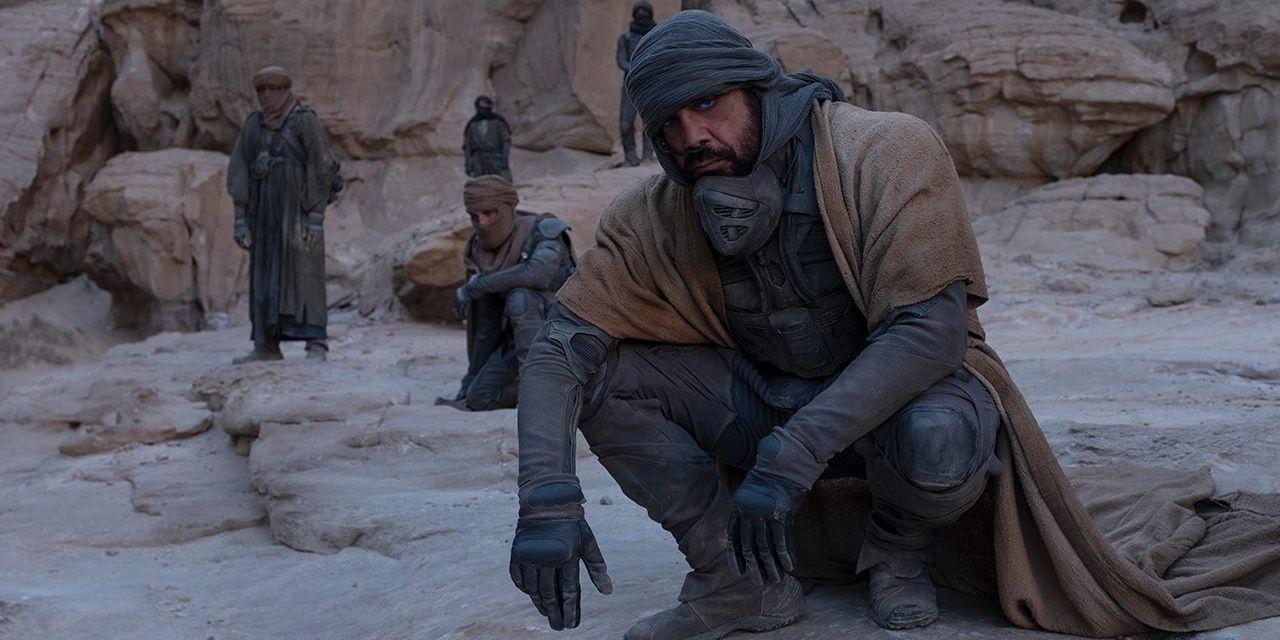Many science fiction societies are built around a single trait. An author will develop a culture of warriors or hunters and bend every detail of their lives around their central purpose. More in-depth examples follow an even less complicated mantra. Science fiction cultures like the Fremen from Dune develop as the author examines their circumstances and logically crafts their daily life to match.
Frank Herbert's Dune borrows heavily from existing cultures. His use of the beliefs, terminology, and specific behavior of religious and ethnic groups he doesn't belong to remains a topic of conversation. The Fremen are inspired and canonically tied to Islamic and Buddhist traditions that would have been seen as "exotic" in 1965. The presence of these elements has been downplayed by modern retellings, like Denis Villeneuve's 2021 film adaptation. The Fremen represent a unique case of cultural representation.
How did the Fremen begin?
Fremen history is only remembered through oral tradition, much of which is incomplete or apocryphal. Their ancestors came from Earth, like all humans. Their culture started from a religious fusion called Buddislam, which developed a branch called Zensunni. They probably emerged near the Nile Valley in Africa. The Zensunni Wanderers became nomadic, leaping planets to avoid persecution. They lived on at least eight worlds before settling on Arrakis. Over thousands of years, the Zensunni Wanderers built lives and societies on Arrakis. Their religious beliefs shifted over the generations. Life on Arrakis was impossible for most, but every aspect of the unforgiving desert planet shaped what would become Fremen culture.
How is Fremen society organized?
Fremen divided themselves into small collectives called sietches. Each sietch lived in an underground structure, usually carved by a combination of erosion and labor. There were more than 30 known communities, but the desert planet could have supported many more. Fremen society was patriarchal and polygamous. Each sietch was ruled by an overseer called a Naib. Naibs and most other high-ranking men tended to marry multiple wives. Though sietches could be divided by hundreds of miles and unique customs, they all saw themselves as part of a broader brotherhood. Fremen trained in combat from a young age. Almost all social mobility was attained through violence. Most Naibs killed their predecessor to take the job. Ritual combat is critical and common to Fremen. Fremen were widely viewed as skilled and dangerous warriors, made impossibly tough by the harsh surface of Arrakis.
Resource management is the most necessary virtue in Fremen society. Water is incredibly scarce. Every drop is precious. Fremen view the limited available water as the property of the tribe. Fremen manufacture and wear stillsuits at all times. The stillsuit is a complex mesh of webbing and containers that captures almost all the water expelled by a person. It creates a stable hydration loop by routinely filtering sweat and urine into drinkable water. The system allows a Fremen to survive weeks in the desert without any external source of fluids. Fremen are strictly required to wear a stillsuit at all times. They do not tolerate waste. When a Fremen dies, their body is rendered down to water for the good of the tribe. Injured enemies were quickly executed and drained of their water. Only those deemed guilty of something horrible would be spared this treatment, as their water would be seen as spiritually unclean. It was tradition for blind or disabled Fremen to wander into the desert, sacrificing themselves to avoid taking up more water. This careful concern for every drop of fresh water has kept the Fremen alive in impossible conditions for generations.
Fremen and the Shai-Hulud
Fremen worship the gargantuan sandworms that inhabit their home planet. They see them as physical manifestations of God. They're seen as all-powerful beings who provide the Fremen with everything they need. Fremen ride the sandworms by creating a weakness in their armor and attaching hooks to their plate to travel long distances. Sandworms could not consume water. It would poison them, but the resulting chemical would become the Water of Life, which Fremen used to anoint Reverend Mothers. Most importantly, the Shai-Hulud created the Spice Melange. The Fremen were dependent on the usage of this mind-altering drug, which also fueled all commerce and society beyond Arrakis. The culture of the Fremen was heavily influenced by the sandworm and the impact it had on their way of life.
The Fremen live under the only circumstances available on Arrakis. Every detail of their society was carefully crafted to survive otherwise lethal conditions on one of the most inhospitable inhabited planets in fiction. Fremen are traditionalist, spiritual, and strict. They lie in wait for the coming of the chosen one. The Fremen struggle to survive every day. Their might is unchallenged, and their willingness to fight never ends. There's a lot to admire about the Fremen, even if no one would ever want to live like they do.







